Xylophanes isaon
|
|
Updated as per http://www.pybio.org/SPHINGINAE.htm (Paraguay), October 2007
Updated as per More, Kitching and Cocucci's Hawkmoths of Argentina 2005, October, 2007
Updated as per personal communication with Larry Valentine (Itanhandu, Minas Gerais, Brazil, February 7, 2011); February 8, 2011
Updated as per personal communication with Ezequiel Bustos (Shilap revta. lepid. 43 (172) diciembre, 2015, 615-631 eISSN 2340-4078 ISSN 0300-5267), January 4, 2016
|
Xylophanes isaon
(Boisduval, [1875])
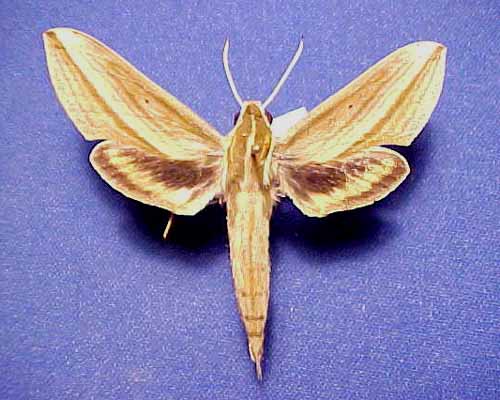
Xylophanes isaon by John Vriesi.
This site has been created by
Bill Oehlke at oehlkew@islandtelecom.com
Comments, suggestions and/or additional information are welcomed by Bill.
TAXONOMY:
Family: Sphingidae, Latreille, 1802
Subfamily: Macroglossinae, Harris, 1839
Tribe: Macroglossini, Harris, 1839
Genus: Xylophanes Hubner [1819] ...........
Species: irrorata Boisduval, [1875]
|
MIDI MUSIC
.....It's a Wonderful World.....
copyright C. Odenkirk
ON.OFF
<bgsound src="world.mid" LOOP=FOREVER>
|
DISTRIBUTION:
Xylophanes isaon moths fly in
southeastern Brazil (specimen type locality) and
Paraguay: Caaguazu, (possibly Caazapa and Itapua (WO??));
Argentina: Misiones.
Theretra olivacea Rothchild, 1894, Brazil, is the same as Xylophanes isaon.
f. nanus Raymundo, 1932, Brazil, is the same as Xylophanes isaon.
The thorax has a grey medial line that widens posteriorly and continues onto the abdomen as two widely separated, not very distinct bands,
each bordered dorsally by a series of sometimes interconnected dots and with a distinct dark grey-brown medial line. The tegula are olive green with a
golden-yellow medial line, and this colouration tapers, without the center golden-yellow streaks, onto at least the first two abdominal segments, ending in black.
Ground colour is buff with drab, olive grey-green bands and lines. The dark first pm line is closely traced by a second, thinner line that terminates
before reaching the inner margin. A third, weak pm line also terminates before reaching the inner margin, and it divides a wide, pale band running from costa to
the inner margin between the second pm line and the darkest and broadest, fourth pm line which runs from the apex to body side of midpoint of the inner margin.
The forewing cell is a small, distinct, dark dot.
Two additional weaker lines run subparallel to the fourth pm line.
The hindwing upperside is black with a broad, continuous pinkish-orange to very pale yellow-buff median band. The hindwing margin/fringe is buff
and completely surrounds the wing.
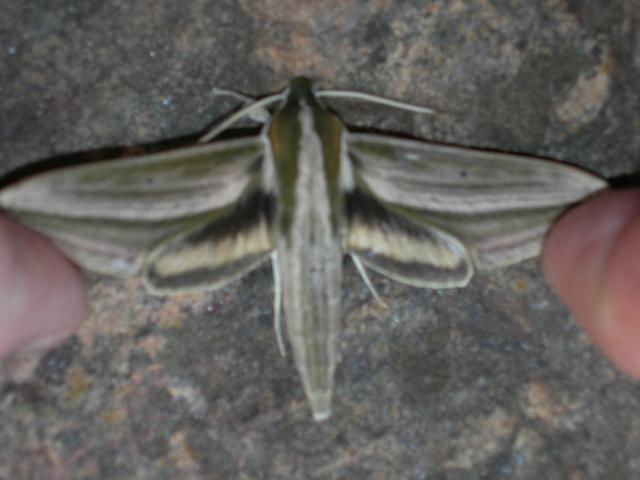
Xylophanes isaon, Itanhandu, Minas Gerais, Brazil,
February 7, 2011, courtesy of Larry Valentine.
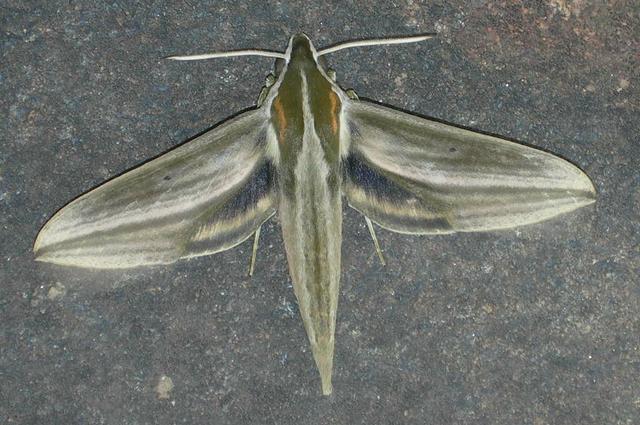
Xylophanes isaon, Itanhandu, Minas Gerais, Brazil,
February 7, 2011, courtesy of Larry Valentine.
FLIGHT TIMES:
Xylophanes isaon adults probably brood continuously. Larry Valentine reports a February 7, 2011, flight in Itanhandu, Minas Gerais,
Brazil.
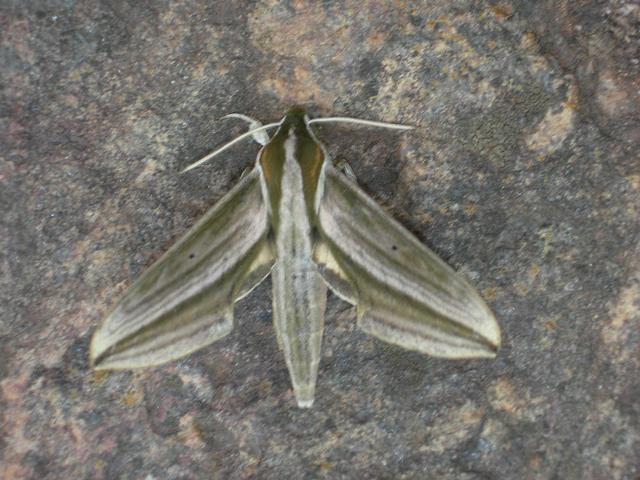
Xylophanes isaon, Itanhandu, Minas Gerais, Brazil,
February 7, 2011, courtesy of Larry Valentine.
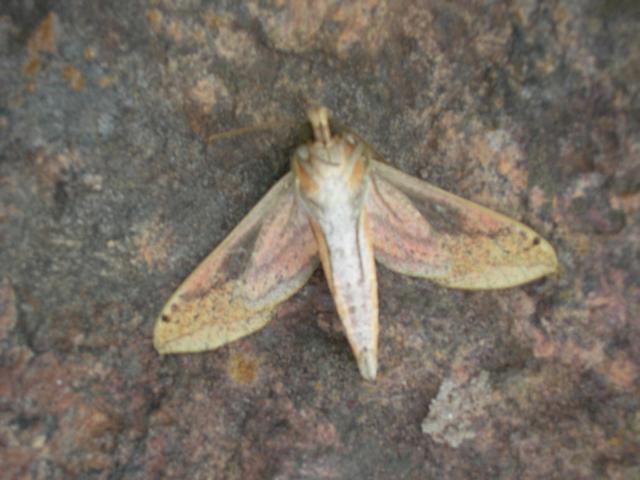
Xylophanes isaon (verso), Itanhandu, Minas Gerais, Brazil,
February 7, 2011, courtesy of Larry Valentine.
ECLOSION:
Pupae probably wiggle to surface from subterranean chambers just prior to eclosion.
SCENTING AND MATING:Females call in the males with a pheromone released from a gland at the tip of the
abdomen. Males come in to lights very readily, but females are seldom taken in that way.
EGGS, LARVAE, PUPAE:
Larvae probably feed on Psychotria panamensis and
Psychotria nervosa and other members of the
of the Rubiaceae family and on
Pavonia guanacastensis of the Malvaceae family.
Moths emerge approximately one-two months after larvae pupate.
Use your browser "Back" button to return to the previous page.
Goto Main Sphingidae Index
Goto Macroglossini Tribe
Goto Central American Indices
Goto Carribean Islands
Goto South American Indices
Goto U.S.A. tables




